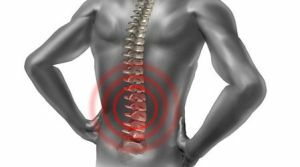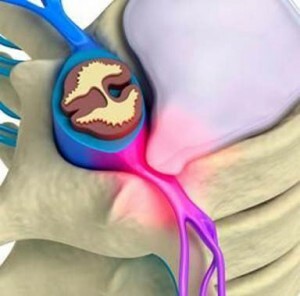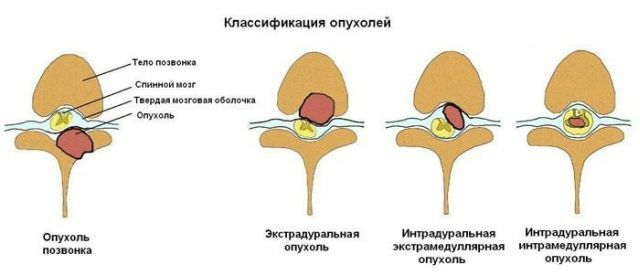 Myelopathy is a pathology that occurs as a result of spinal cord injury. Provoke the development of the disease can various causes, ranging from circulatory disorders, squeezing intervertebral discs and ending with trauma and cancer.
Myelopathy is a pathology that occurs as a result of spinal cord injury. Provoke the development of the disease can various causes, ranging from circulatory disorders, squeezing intervertebral discs and ending with trauma and cancer.
The term "myelopathy" means damage to the spinal cord of any kind, so the disease may differ in symptoms, flow, treatment and have its own characteristics depending on localization.
Content
- Causes and risk factors
- Classification
- disorders Common clinical picture
- Symptoms lesions of the cervical spine
- symptoms of thoracic myelopathy
- blow to the lumbar
- Confirmation of the diagnosis
- Therapy violation
- forecast and consequences
- Preventive measures
Causes and risk factors
provoke myelopathythere may be different reasons:
- spine trauma;
- osteochondrosis;
- Osteoporosis;
- circulatory disorders;
- atherosclerosis;

- cancers;
- multiple sclerosis;
- intervertebral hernia;
- infection;
- irradiation with radioactive substances;
- hemorrhage in the spinal cord;
- some chronic diseases.
Due to the fact that different causes can cause myelopathy, there are both young people( from 15 to 30 years) in risk factor and people over 50 years old.
The following categories of people fall into the risk group:
- young and active people( most susceptible to spinal injuries);
- patients with vascular diseases;
- cancer patients;
- elderly women and people taking steroids( increases the risk of osteoporosis);
- patients with multiple sclerosis;
- athletes and people engaged in heavy physical labor;
- people, leading a low-activity lifestyle and finding a long time in one position and so on.
Classification of violation
Myelopathy can be of several types depending on the cause of development:
- Vertebrogenic .One of the most common types of violation. May be caused by trauma or compression of the spinal cord. There are two forms of vertebrogenic myelopathy. Acute, which develops as a result of a spinal injury, for example, in an accident, when there is a displacement of the vertebrae or fracture. Chronic, which develops gradually due to osteochondrosis, in which the spinal cord is squeezed and blood circulation is disturbed.
- Atherosclerotic .This kind of pathology develops as a result of the deposition of plaques on the walls of the vessels responsible for feeding the spinal cord. The causes of the disease can be: atherosclerosis;disturbances in metabolic processes;heart diseases.

- Vascular .It is caused by circulatory disorders and diseases of the vascular system. Most often, vascular myelopathy affects the thoracic or lumbar spine.
- Epidural .This type of pathology is considered one of the most dangerous, because because of a hemorrhage in the spinal cord, its destruction can occur. During a hemorrhage, the blood enters the spinal canal, which can cause irreversible processes.
- Compression is characterized by the onset of increased pressure on the spinal cord. The following factors can lead to the development of pathology: a tumor;intervertebral hernia;protrusion of vertebral discs;spondylosis;narrowing of the canal of the spinal cord and so on.
Also myelopathy can be:
- is degenerative ( caused by a lack of vitamins and minerals, ischemia of the spinal cord);
- infectious ( infections affect the spinal cord);
- focal ( developed as a result of exposure to radioactive substances) and so on.
Depending on the course of symptoms and the development of pathology, the following forms are distinguished:
- chronic ( the disease does not progress);
- progressive ( the disease is rapidly developing).
Myelopathy can be localized in the cervical, thoracic or lumbar region. Sometimes, depending on the cause, there may be more than one focus of the disease.
Due to the fact that the causes of myelopathy can be different factors, its symptoms differ depending on the variety.
General clinical picture of
In most cases, the symptoms of the disease are similar. First, soreness appears at the site of spinal cord injury. After developing neurological manifestations of the disease:
- decrease in the sensitivity of skin in the place of injury;
- weakness in the muscles;
- inability to do involuntary movements;
- decrease in muscle strength until paralysis.
Symptoms of cervical spine
Most often myelopathy of the cervical spine is accompanied by the following symptoms: 
- the appearance of excruciating pain in the neck, between the shoulder blades, and in the occiput;
- muscle cramps;
- weakness in the hands;
- involuntary jerking of the upper limbs;
- numbness in the skin of the hands and neck.
Symptoms of thoracic myelopathy
Myelopathy of the thoracic spine is characterized by the following manifestations:
- severe pain in the heart, similar to the infarction;
- excessive weakness in the hands, which does not allow physical work;
- increased pain in the spine and ribs when the body is tilted;
- decreased sensitivity;
- appearance of spasms in the hands, as well as muscles in the thoracic and cardiac region;
- possible involuntary jerking hands.
Bump in the lumbar region of the
If lumbar myelopathy develops, the disease has such symptoms: 
- severe pain in the lumbar region, worse with loads;
- numbness of the skin of the lower limbs;
- appearance of weakness in the legs;
- lack of reflexes on the legs( paralysis is possible);
- disruption of the rectum and bladder;
- back pain, radiating to internal organs.
Confirming the diagnosis of
To diagnose a disease, a patient needs to undergo a series of clinical and laboratory studies. A full examination allows not only to accurately diagnose, but also to establish the cause of the disease, which makes it possible to prescribe effective treatment.
In case of suspected myelopathy, the doctor may prescribe such instrumental studies:
- computed tomography;

- magnetic resonance imaging;
- fluorography;
- radiography;
- cardiogram;
- electromyography;
- densitometry.
Also for complete clarity of the development of the disorder, laboratory tests are performed:
- general blood test;
- biochemical blood test for immunoglobulin levels;
- seeding of cerebrospinal fluid;
- spinal cord puncture;
- biopsy of soft or bony tissues.
Therapy violations of
Treatment of myelopathy directly depends on the cause of the onset. The course of treatment may include taking medications, special gymnastics, physiotherapy procedures and much more.
 If myelopathy is caused by a spinal injury or a fracture, the patient is prescribed a course of strong analgesics, and the body is immobilized for correct bone growth. When the bones coalesce, the patient needs to visit the massage room, do exercise therapy and physical therapy.
If myelopathy is caused by a spinal injury or a fracture, the patient is prescribed a course of strong analgesics, and the body is immobilized for correct bone growth. When the bones coalesce, the patient needs to visit the massage room, do exercise therapy and physical therapy.
In the case of an infectious or inflammatory process, antibiotics may be prescribed. When the body temperature rises, antipyretic drugs are prescribed. With multiple sclerosis, the patient needs to take painkillers and steroid medications.
For the removal of symptoms, the doctor can prescribe:
- non-steroid preparations;
- muscle relaxants to relieve muscle spasms;
- medications to relieve muscle pain;
- steroids to eliminate radicular pain( applied topically by injection).
When a tumor appears, the intervertebral hernia, as well as when splitting the bones during a trauma, surgical intervention is indicated. Spinal traction can also be prescribed with the help of special procedures and other methods of treatment.
Prognosis and consequences of
Myelopathy is a disease that can have serious consequences. Among the main complications of the disease is worth noting:
- the emergence of phantom pains;
- loss of mobility;
- paralysis;
- reduced sensitivity and lack of reflexes;
- malfunction of the bladder and rectum.
Restoration of the spinal cord depends on the degree of damage and the cause of the disease. As the statistics show, with slight damage the patient has a great chance of a full recovery.
In the presence of tumors, there is a high risk of metastases. An unfavorable prognosis is also given by doctors with serious injuries, extensive hemorrhage, prolonged compression and irradiation with radioactive substances.
Preventative measures
Due to the fact that myelopathy can be caused by different reasons, there is no unified system of preventive measures. But to reduce the risk of the disease, you need to monitor your health and adhere to simple recommendations:
- Properly eat .The body should receive the necessary vitamins and trace elements( for the spine are important vitamin B, E,
 calcium and other minerals).In addition, fatty and highly carbohydrate food contributes to a set of excess weight and increased cholesterol in the blood.
calcium and other minerals).In addition, fatty and highly carbohydrate food contributes to a set of excess weight and increased cholesterol in the blood. - Keep an active lifestyle .For the spine, moderate physical activity is important. Do exercises, gymnastics, go in for sports.
- Avoid excessive physical exertion of the , which can lead to dislocations of the vertebrae and other injuries of the spine.
- Watch your posture .
- Treat chronic and infectious diseases of in a timely manner.
- Discard the bad habits of .
The danger of myelopathy is that it can be caused by various causes and leads to serious consequences. If any unpleasant symptoms occur, see a doctor immediately.



